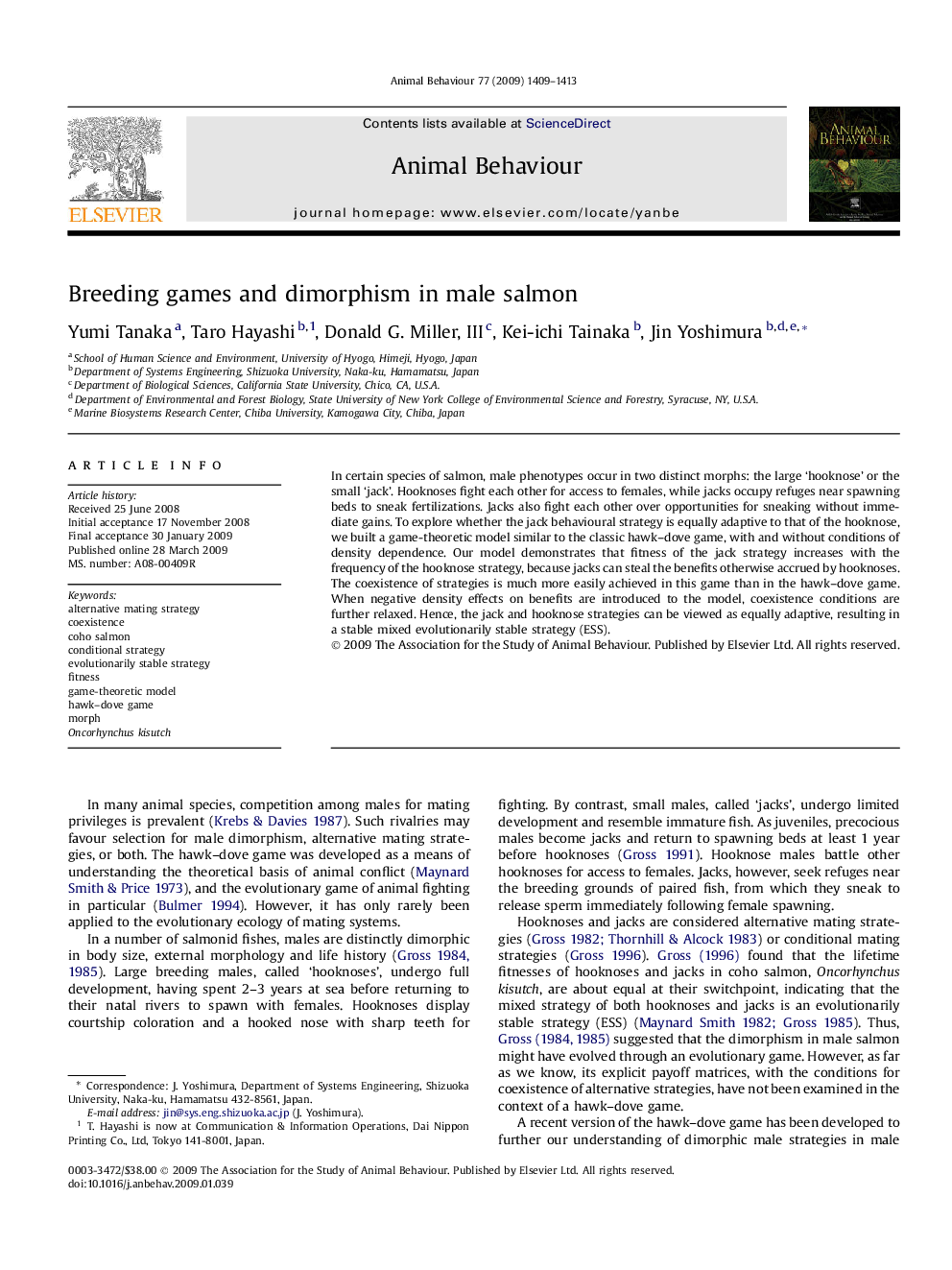| Article ID | Journal | Published Year | Pages | File Type |
|---|---|---|---|---|
| 2418029 | Animal Behaviour | 2009 | 5 Pages |
In certain species of salmon, male phenotypes occur in two distinct morphs: the large ‘hooknose’ or the small ‘jack’. Hooknoses fight each other for access to females, while jacks occupy refuges near spawning beds to sneak fertilizations. Jacks also fight each other over opportunities for sneaking without immediate gains. To explore whether the jack behavioural strategy is equally adaptive to that of the hooknose, we built a game-theoretic model similar to the classic hawk–dove game, with and without conditions of density dependence. Our model demonstrates that fitness of the jack strategy increases with the frequency of the hooknose strategy, because jacks can steal the benefits otherwise accrued by hooknoses. The coexistence of strategies is much more easily achieved in this game than in the hawk–dove game. When negative density effects on benefits are introduced to the model, coexistence conditions are further relaxed. Hence, the jack and hooknose strategies can be viewed as equally adaptive, resulting in a stable mixed evolutionarily stable strategy (ESS).
